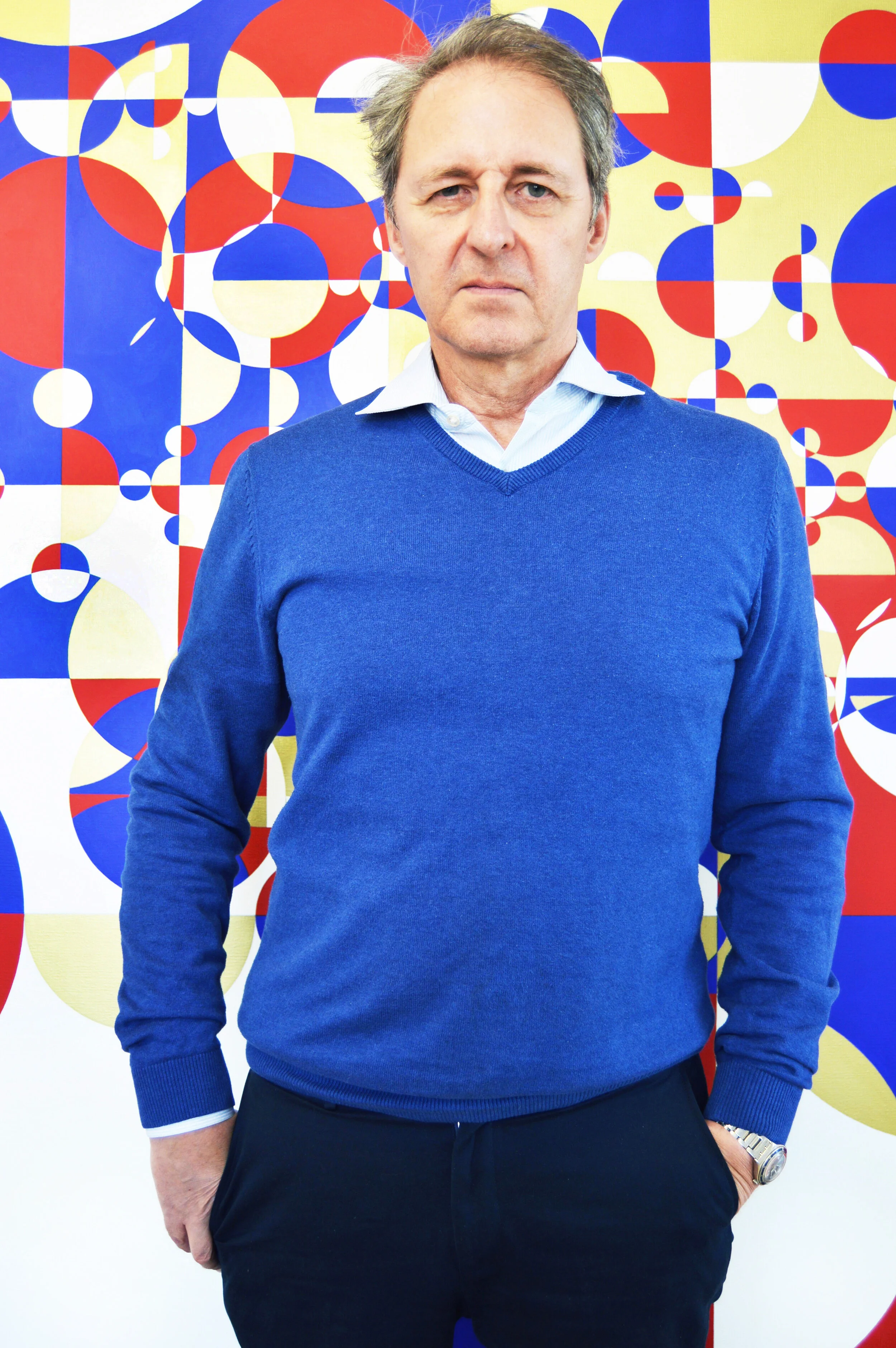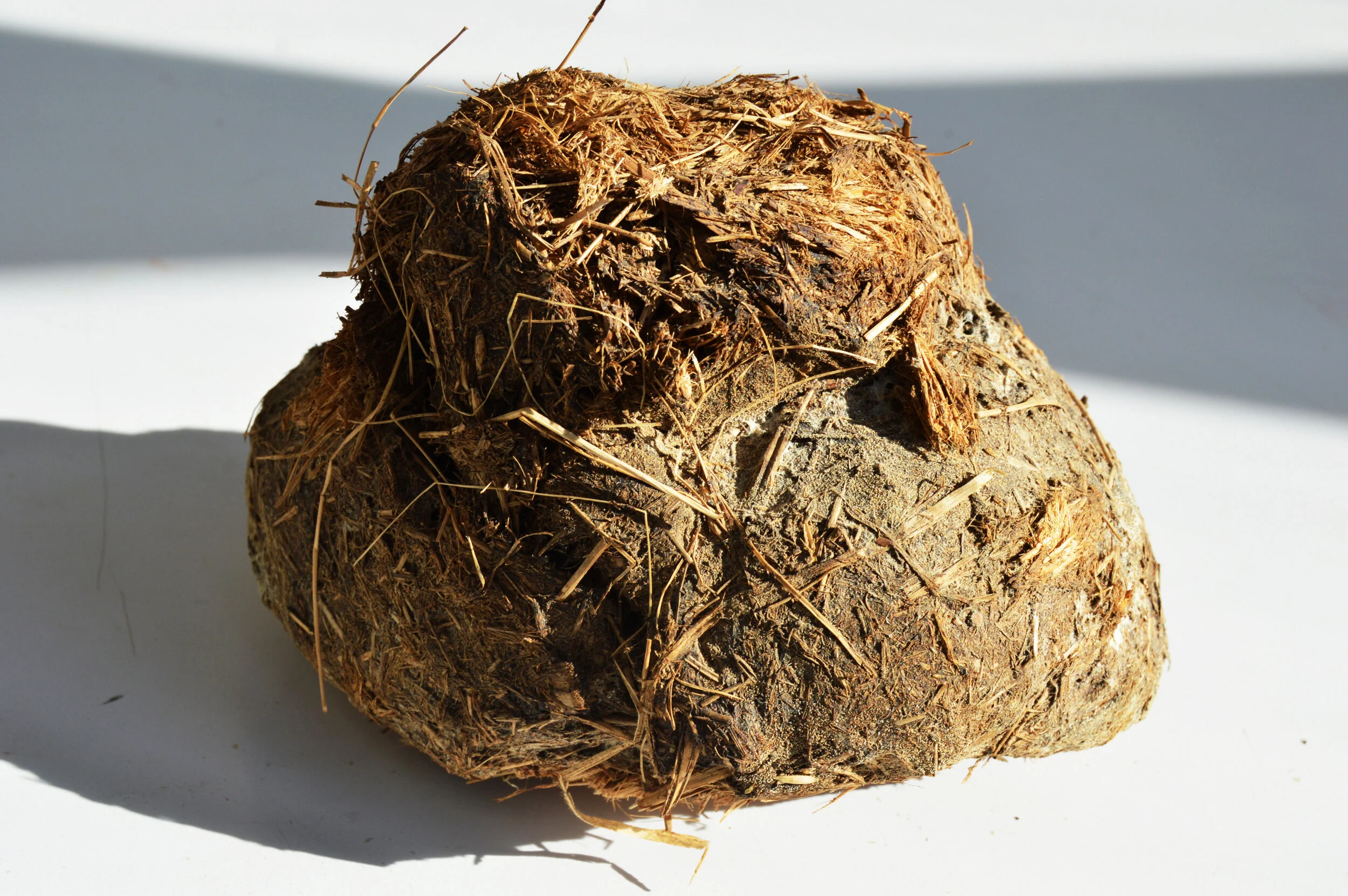Elephant dung, chewing gum and human hair: the life of a contemporary art restorer
Christian Scheidemann owns the only conservation studio in the US that deals solely with contemporary art made from unconventional materials ranging from pound cake to petroleum jelly
Christian Scheidemann stands in front of a Gabriel Orozco piece – more conventional that many of the works in his care – at his Contemporary Conservation studio in New York City. Photo: Nina Roberts
Published in Guardian US on May 23, 2015
Christian Scheidemann’s New York City studio looks more like a high-ceilinged gallery space than an art conservation workshop. Contemporary pieces dot the pristine space. A block of concrete embedded with a wooden chair by Doris Salcedo sits in one room; a doll submerged in a clear container full of chocolate, made by Dieter Roth, is in another. One table over is a Jason Rhoades bath towel assemblage topped with wax drippings that had been unraveled during a search for contraband by airport security.
Scheidemann, 62, is the founder and president of Contemporary Conservation. He has owned his art conservation business, which began in Germany, for more than 30 years. Since the late 1980s, he’s specialized in contemporary artworks made with temperamental and challenging materials. Petroleum jelly, human hair, latex or chewing gum: Scheidemann gives each material the respect and dedication a more traditional conservator might give oil or acrylic paint.
“We like problems. We like solving problems,” Scheidemann says. Contemporary Conservation has an 11-person staff including seven conservators, some of whom are in the studio deeply engaged with an artwork. The company might have 50 ongoing projects at one time, as art conservation is a painfully slow and lengthy process.
Other studios, of course, restore contemporary art, but some of the most unusual materials have long presented unusual problems. Contemporary Conservation is unique in the US for its focus on unconventional materials. While most conservation studios focus on paintings or objects made with paper, glass or wood, materials such as elephant dung, polyurethane, wax and rubber tubes have been Contemporary Conservation’s primary focus for decades.
In his minimalist, book-lined office, the tall, calm Scheidemann explains that unlike in museum conservation departments, most of the works that come to his studio are in the process of changing owners. Clients want to make them “sellable.” Scheidemann doesn’t simply fix art, although many clients would like him to do just that. “We are always exposed to value, devaluation,” he says. Instead, he makes a judgment call on what to do with a piece, keeping in mind the artwork’s historical context as well as the original intent of the artist.
“Some artists want the object to deteriorate and they expect it,” says veteran art advisor Barbara Guggenheim, who works in New York and Los Angeles. “It’s called inherent vice.” Other artists want their work to be eternally as fresh as the moment it left the studio 30 years before.
Scheidemann has become the go-to guy in New York’s contemporary art conservation market. His niche began by accident in 1989, after a child mistook one of artist Robert Gober’s iconic sink-like instillations for a real sink and decided to hang on it. When the sculpture fell to the floor, its lip was shattered and its plaster chipped.
Spare elephant dung at Contemporary Conservation in case certain Chris Ofili paintings needs work. Photo: Nina Roberts
Scheidemann was then the in-house conservator at the Deichtorhallen, the exhibition space in Hamburg where Gober’s installation was being shown. Scheidemann flew to New York City to meet Gober, who gave him the right plaster, plywood and paint, and demonstrated how he had made it so that Scheidemann could restore the piece.
Soon after Scheidemann’s return to Germany, Gober asked him to find a solution for a new piece of art: he needed doughnuts that wouldn’t stain the paper bags holding them for his “Bag of Donuts” series. Scheidemann obliged. Multimedia artist Matthew Barney then contacted Scheidemann to figure out how to best use a pound cake for one of Barney’s pieces. Next came a request for preserving banana peels. Word spread and dealers like David Zwirner, Larry Gagosian and Paula Cooper were flying Scheidemann to New York for his expertise. He was in the city so often, Scheidemann decided to move his business to New York in 2002.
Gober remains one of the artists with whom Scheidemann works closely, as do Matthew Barney, Paul McCarthy and Chris Ofili. “He’s unafraid to talk to scientists, to find out about the physical properties of things, and he likes going into areas that he doesn’t understand,” Gober says. Scheidemann receives a stream of artists’ questions via email or phone, like one recent message that asked his opinion about working with Himalayan salt blocks to attract live deer for an outdoor installation.
Art advisor and appraiser Renée Vara first met Scheidemann when he was reapplying elephant dung that had fallen off of a Chris Ofili painting. He has the “soul of an artist,” she says.
Scheidemann says he has always felt extremely privileged to be able to touch artwork and have access to artists’ ideas and concepts. But when asked if he ever had artistic aspirations, he answers: “Definitely not, I have nothing to say.”
Scheidemann’s business has steadily grown since his arrival in New York. Even the 2008 recession didn’t stem the flow of Contemporary Conservation’s incoming projects. It may have had the opposite effect, according to Scheidemann, who recalls that “people were trying to sell their artworks, but they had to be repaired first”. Hurricane Sandy also damaged a slew of pieces in 2012 that needed hefty conservation and restoration.
Still, Contemporary Conservation has experienced a few bumps along the way, such as the difficulty in finding talented local conservators. All of Scheidemann’s conservators are immigrants trained in Europe. “We’ve tried American conservators and it hasn’t worked out so far,” says Scheidemann, though he adds, diplomatically: “We’re still hoping.” In the meantime, obtaining work visas for his employees has been an expensive and time consuming endeavor.
Other hurdles include managing the expectations of collectors, dealers, art advisors, appraisers, insurance companies and even artists or their estates – each with their own agenda for the outcome of a particular conservation project. A large part of Scheidemann’s job includes writing condition reports when an artwork is up for sale or has been damaged, which can make or break a sale. “It’s almost like a zoo,” Scheidemann says.
Scheidemann and other conservators are not privy to prices and do not financially benefit from art sales. Conservators also don’t get commissions; they are paid by the hour. But the frenzy around contemporary artwork’s skyrocketing prices – Jeff Koons’ Balloon Dog, for example, sold for $58.4m at a 2013 Christie’s auction – has caused a pushier, greedier side of certain collectors and dealers to emerge.
“It can be very unpleasant,” Scheidemann says, referring to writing condition reports, which often affect an artwork’s selling price. “We have people call and say, ‘Oh, can you remove this sentence from the condition report?’ or ‘Can you add this sentence?’ We are very strict. We have to be truthful to the artwork no matter what interests are behind it.”
What happens when an insured artwork is severely damaged? Each piece is evaluated on a case by case basis, according to Mary Sheridan, the fine art service manager with the insurance company Chubb. Artists or their estates are consulted, and the artwork might be returned to the artist, destroyed, restored by a conservator and returned to the owner, or put back on the market by the insurance company if the owner rejects it, all with varying payouts to the owner depending on their policy.
Some art owners reject damaged artworks after the restoration process. Scheidemann has sometimes thought he has brought pieces back to perfection, only to have the owner say, “It’s still off.”
As the market for contemporary art expands – collectors in China have been buying up many American and European pieces – Scheidemann is curious about who is taking care of all the Gerhard Richters, Robert Gobers and Jeff Koonses purchased by Chinese collectors. But he isn’t packing his bags yet. Despite the globalized market, artworks always return to their origins to be conserved, he says. “It’s important to know the cultural background.”

